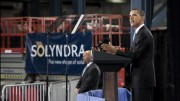Cameco CEO Tim Gitzel first joined the company’s executive team in 2007 – the year that the uranium price peaked at a high of US$136 per lb., rising from less than US$10 per lb. In 2001.
And although the current price of uranium oxide, at US$53.50 per lb. is nowhere near those bubbly (and it must be said, unsustainable) levels, Gitzel sounded downright giddy on the uranium miner’s first-quarter conference call at the end of April.
There are many things that are going for Cameco, one of the world’s top uranium suppliers, including increasing prices, and rising demand and contracting by utilities. But what they all boil down to is the realignment of energy markets post Russia’s invasion of Ukraine last year.
On the call, Gitzel described attending the dinner between Prime Minister Justin Trudeau and U.S. President Joe Biden in Ottawa in late March. During the event, he said the two leaders talked about the critical role of nuclear energy and the importance of nuclear collaboration between Canada and the U.S.
“It was almost hard to believe — like a dream come true,” Gitzel, who’s been Cameco’s CEO since 2011, told analysts. “Nuclear energy would NEVER have made top billing at a meeting between our countries even a few years ago.”
The same day as the event, the two nations released a joint statement pledging more cooperation on nuclear energy and technology as a way to fight both climate change and Western dependence on Russia.
The “really positive” joint statement between the U.S. Department of Energy (DOE) and Canada’s Ministry of Natural Resources is “the kind of signal from government that our industry has been waiting for for a long time,” Gitzel said.
This signal extends beyond North America. In mid-April, five G7 countries including Canada, the U.S., France, Japan and the U.K. signed a cooperation agreement on nuclear fuel, proclaiming their intent to “reduce reliance on civil nuclear and related goods from Russia, including working to assist countries seeking to diversify their nuclear fuel supply chains,” and to work together to establish a global commercial nuclear fuel market and support their “collective climate, energy security, and economic resilience objectives.”
In a separate statement, U.K. Energy Security Secretary Grant Shapps zeroed in on how Russia’s actions under President Vladimir Putin have spurred this new global geopolitical realignment.
“The U.K. has been at the very heart of global efforts to support Ukraine, defeat Putin and ensure neither him nor anyone like him can ever think they can hold the world to ransom over their energy again,” he said. “This is the next vital step, uniting with other countries to show Putin that Russia isn’t welcome anymore, and in shoring up our global energy security by using a reliable international supply of nuclear fuel from safe, secure sources.”
Shapps’ pointed words draw attention to just how little progress has been made on weaning off Russian supply since the war started last February, despite Western nations’ desire to punish Russia for its ongoing assault of Ukraine. While Russia is not a huge supplier of uranium (about 6%), it does control around 27% of global uranium conversion capacity, and nearly 40% of global enrichment capacity, according to Sprott, which has several uranium-centred investment products. Realizing the damage it would do to their own nuclear sectors, Western leaders have mostly opted not to impose sanctions on Russian supplies. In a mid-April report, U.K.-based defence and security think tank Royal United Services Institute (RUSI) noted that together, the U.S. and France imported close to US$1 billion worth of enriched uranium from Russia last year.
Even so, prices in the enriched fuel and conversion markets have been climbing as Western utilities have sought alternatives to Russian supply.
That’s helped Cameco break into new markets in Eastern Europe, including signing a 10-year contract with Westinghouse Electric to supply UF6 (converted uranium suitable for enrichment) to Bulgaria.
“Our recent contracting success to supply new markets in Eastern Europe clearly demonstrates the desire of our customers to diversify. These are markets where we were previously unable to compete,” the company said in its first-quarter results press release.
Price rise to come
While uranium prices have risen, enrichment and conversion prices have seen the greatest boom so far. In its most recent quarter, Cameco’s average realized price only ticked up 4% to US$45.14 per lb. of uranium oxide (U₃O₈) from US$43.24 per lb. in the same period last year.
But Cameco execs believe that’s still to come.
“We haven’t seen that kind of demand that’s gone through those two parts of the fuel cycle fully hit the uranium side yet, so we’re obviously pretty excited about it — it’s why we want to remain leveraged in both our portfolio and our pipeline,” said Grant Isaac, Cameco’s CFO and executive vice-president on the conference call.
In the meantime, the “positive fundamentals” Cameco has been pointing to for over a decade are finally starting to show up in the company’s financial results.
In the first quarter, Cameco’s revenue was up 73% to $687 million, while its net earnings and production both more than doubled. Cameco produced 4.5 million lb. U₃O₈ in the first quarter (up from 1.9 million lb. in the same period last year), and as it continues to ramp up the McArthur River mine and Key Lake mill, which it restarted last fall after a four-year suspension, it expects that mine alone to produce 15 million lb. this year and 18 million lb. next year.
The real test to what many see as a new uranium bull market will be whether the improving picture for nuclear power translates into new mines. From that perspective, a slow and steady rise in uranium will help junior miners hoping to develop new mines in Saskatchewan’s Athabasca Basin — including NexGen Energy, Fission Uranium and Denison Mines — a lot more than a return to sky-high prices.





Be the first to comment on "Work to sideline Russia on nuclear fuel puts Cameco at centre stage"